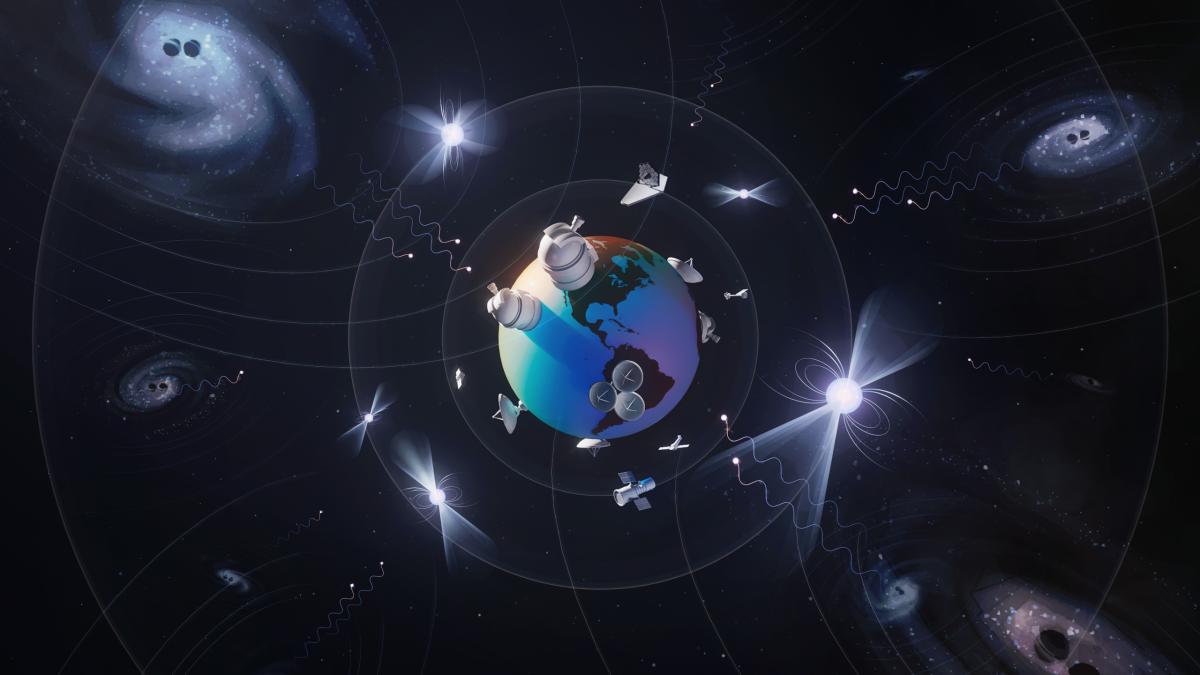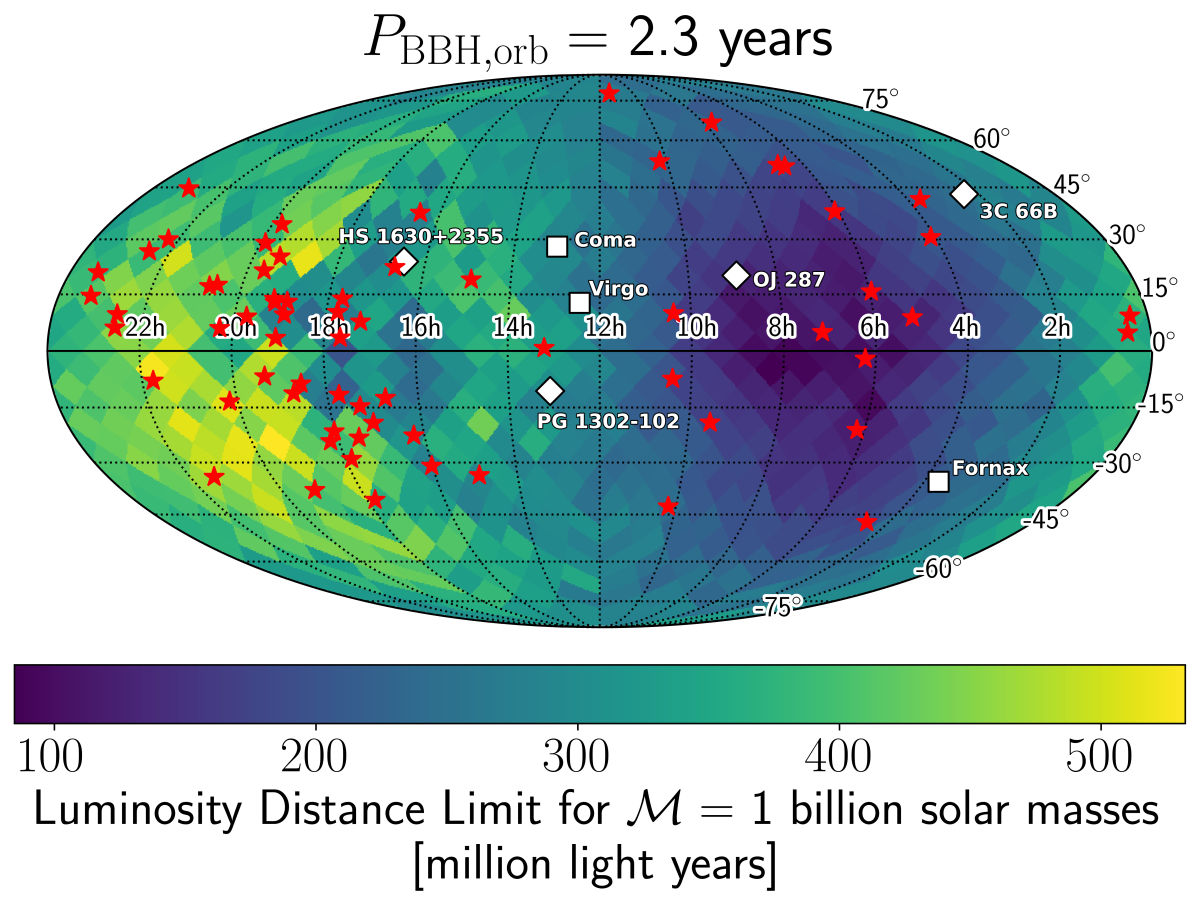
The supermassive black hole binaries at the cores of galaxies produce electromagnetic waves at radio to gamma-ray wavelengths that can be detected by telescopes on Earth and in space. They also produce gravitational waves that can be studied through their effects on an array of radio pulsars. These dual electromagnetic and gravitational wave messengers provide extremely valuable insights that cannot be gleaned from either type of observation alone. Illustration: Olena Shmahalo
The gravitational wave background signature in the NANOGrav 15-year data set raises the question of what might be producing this signal. The mostly likely source is generally thought to be a chorus of massive black hole binaries, but other more exotic possibilities include signatures from physics beyond the standard model of particle physics. One way to decide between these possibilities and provide definite evidence that the background comes from a chorus of binary black holes is to detect the signal from an individual soloist that stands out from the background.
The super massive black hole binaries that NANOGrav is searching for will be sedately orbiting one another, with orbital periods similar to those of planets in our solar system. Unlike the frenzied mergers of stellar remnants detected by the ground based interferometers such as LIGO and Virgo, the NANOGrav black holes evolve very slowly over hundreds of thousands of years. The black hole binaries detected by LIGO emit "chirps" - signals with rapidly changing pitch and volume, while the supermassive black hole binaries targeted by NANOGrav produce almost perfect sine waves. Using a new rapid analysis technique, a Bayesian search for individual black hole binaries was performed using the 15-year NANOGrav data set. The search did not find any strong candidate signals, though there was an intriguing hint of a signal corresponding to a binary period of around 16 years.

An all-sky map showing the reach of the search for supermassive black hole binaries with orbital periods of 2.3 years, with the distance limit scaled for systems with a mass of one billion suns. The red stars indicate the sky locations of the pulsars used in the analysis. White squares show the location of nearby galaxy clusters, while the white diamonds indicate the locations of galaxies where light curve variations suggest binaries might be found. The search is most sensitive in the region of the sky with the most pulsars.
Absent a clear detection, upper limits on the amplitude of individual binary black hole systems were placed as a function of orbital period and sky location. The analysis has its greatest reach for systems with orbital periods of 2.3 years, and at the most sensitive sky location it was possible to rule out the presence of a billion solar mass binary out to a distance of 500 million light years. Looking towards the future, if the background signal is from a chorus of black holes we will eventually be able to locate the loudest sources, which might also be picked up in the time varying brightness from the gas swirling around these systems. With luck, the first soloists might be found in the next NANOGrav data set, or from the combined datasets from the International Pulsar Timing Array.
Agazie et al., 2023, Search for Gravitational Waves from Individual Supermassive Black Hole Binaries. https://arxiv.org/abs/2306.16222
Corresponding Authors
 |
Dr. Bence BécsyCo-Lead for the Search for Individual SMBHB Paper
|
 |
Dr. Neil CornishCo-Lead for the Search for Individual SMBHB Paper
|